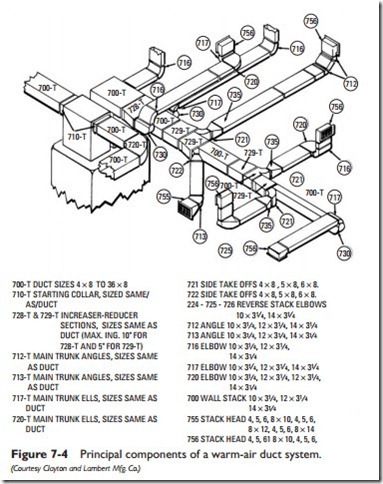Supply Air Registers, Grilles, and Diffusers
The three basic types of supply air outlets used in an air distribution system are (1) grilles, (2) registers, and (3) diffusers.
Grilles (see Figure 7-5) are used not only to admit the airflow but also to deflect it up or down, or to one side or the other, depending on the direction in which the hand-operated bar moves. They are used primarily on high or low wall locations. Floor grilles are used extensively in gravity warm-air heating systems.
A register (see Figure 7-6) is similar in design and function to the grille but with the added feature of being able to regulate the volume of the air with a damper. They may be located on walls (high or low) or floors. Floor registers are often used when installing a new heating system in an old house. The major objection to floor registers is that they tend to collect dust and trash.
A diffuser (see Figure 7-7) is also used to deflect the airflow, but it differs fundamentally in design from the grille. Diffusers manufactured in the form of concentric cones or pyramids are usually mounted on ceilings or walls. Baseboard diffusers are used in perimeter forced warm-air heating systems. The major objection to ceiling diffusers is that they cause drafts when the air is discharged downward and dirt smudges when the air is discharged horizontally across the ceiling.
If the duct system is designed primarily for cooling, outlets are sometimes located on the ceiling or high on the wall; however, satisfactory heating and cooling can be achieved with baseboard outlets placed low on walls by increasing the air volume and velocity and by properly directing the airflow.
